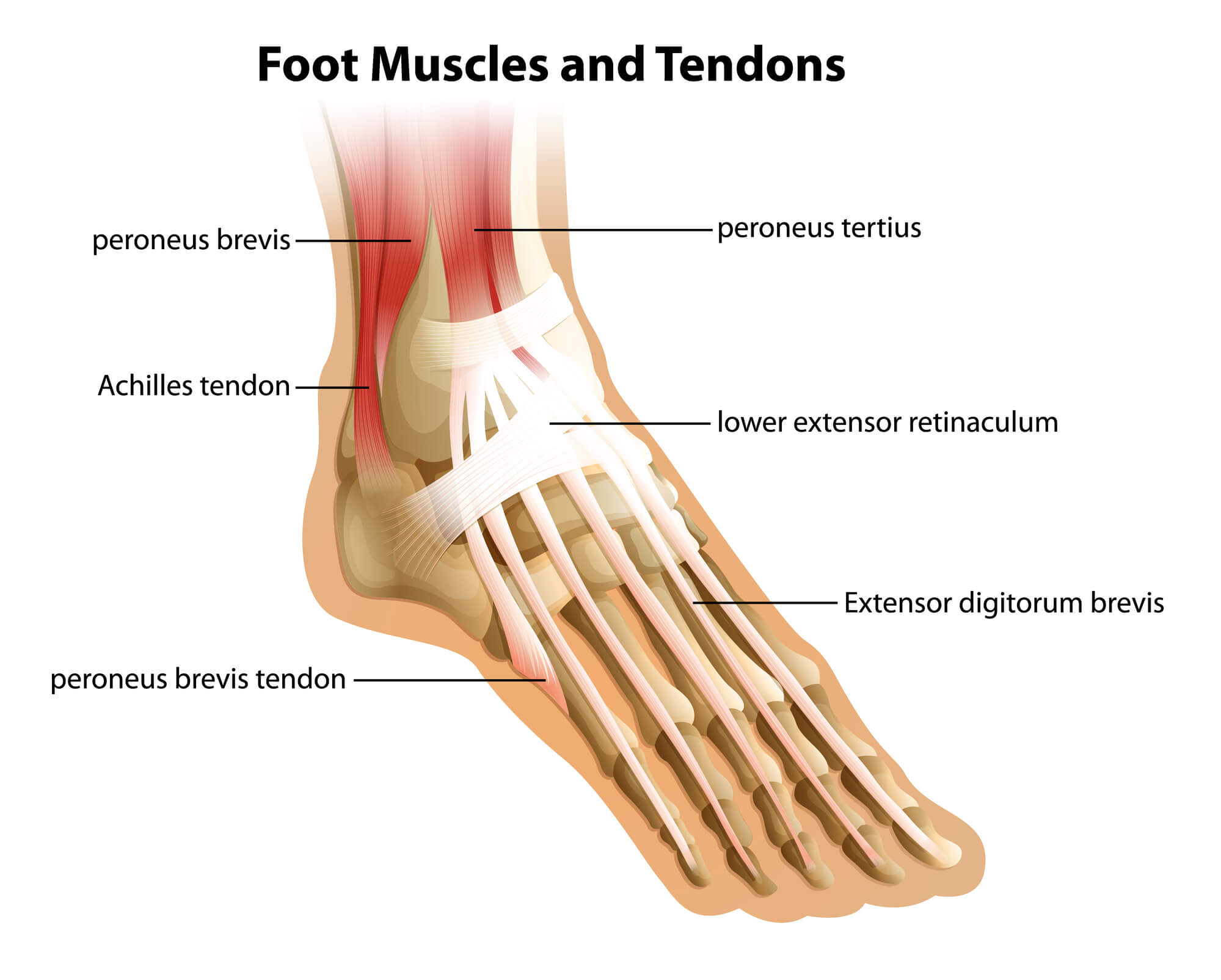Understanding and Treating Peroneal Tendon Tears
The peroneal tendons are two tendons that run behind the outer ankle bone and attach to the foot bone. They are responsible for stabilizing the ankle and helping to lift the foot. Injuries to these tendons can occur due to overuse, acute trauma, or degenerative changes. Podiatrists, who specialize in diagnosing and treating foot and ankle conditions, often see patients with peroneal tendon tears.
What are Peroneal Tendon Tears?
Peroneal tendon tears are injuries to one or both of the peroneal tendons. These tendons can become damaged due to overuse, acute trauma, or degenerative changes. Tears can range from small, partial tears to complete ruptures.
Anatomy of the Peroneal Tendons
The peroneal tendons are located behind the outer ankle bone and attach to the foot bone. The peroneus brevis tendon attaches to the outside of the ankle bone, while the peroneus longus tendon attaches to the bottom of the foot. These tendons work together to stabilize the ankle and lift the foot.

Common Causes of Peroneal Tendon Tears
Peroneal tendon tears are often caused by overuse or repetitive ankle motion. This can happen in athletes who participate in sports that involve a lot of running, jumping, or cutting. Acute trauma, such as an ankle sprain, can cause a peroneal tendon tear. Degenerative changes, such as peroneal tendonitis, can also lead to a tear over time.
Symptoms of Peroneal Tendon Tears
Symptoms of peroneal tendon tears include pain and swelling in the ankle and foot, bruising and stiffness, weakness or instability in the ankle, and difficulty walking or standing on the affected foot. Pain may be felt behind the outer ankle bone or on the outer side of the ankle.

Diagnosis and Treatment
A physical examination by a doctor is the first step in diagnosing a peroneal tendon tear. Imaging tests such as X-rays, MRIs, or ultrasounds may be ordered to confirm the diagnosis and determine the extent of the tear.
Conservative treatment options, such as rest, ice, physical therapy, and orthotic inserts, are often recommended for mild to moderate tears. These treatment options aim to reduce pain and inflammation, improve the range of motion, and strengthen the muscles. Bracing may also be recommended to help stabilize the ankle.
In cases of severe tears or tears that do not respond to conservative treatment, surgery may be necessary. Surgery aims to repair the torn tendon and improve the function of the ankle.
Rehabilitation and Recovery
After a peroneal tendon tear, physical therapy is an important part of rehabilitation and recovery. Physical therapy exercises aim to strengthen and stabilize the ankle and improve the range of motion. Gradual return to activity is also important to avoid re-injury.
Prevention tips to avoid future injuries include stretching and strengthening exercises, proper warm-up before physical activity, and wearing properly fitting shoes with good support.
Conclusion
Peroneal tendon tears are common but can be effectively treated with early diagnosis and appropriate treatment. Rest, physical therapy, and surgery are the key to a full recovery when needed. It's important to take the necessary precautions to prevent future injuries. If you suspect you may have a peroneal tendon tear, you must see a podiatrist for an evaluation and appropriate treatment.
FAQ
Can a peroneal tendon tear heal on its own?
Mild to moderate peroneal tendon tears may heal with rest, ice, physical therapy, and orthotic inserts. However, severe tears or tears that do not respond to conservative treatment may require surgery to repair the tendon and improve the function of the ankle.
How long does a peroneal tendon tear take to heal?
The healing time for a peroneal tendon tear can vary depending on the severity of the tear and the treatment received. Mild to moderate tears may take several weeks to a few months to heal, while severe tears may take several months or longer.
Can you walk with a peroneal tendon rupture?
Walking may be difficult or painful with a peroneal tendon rupture. It is important to seek medical attention and follow a treatment plan to stabilize the ankle and improve function.
What happens if you tear your peroneal tendon?
If you tear your peroneal tendon, you may experience pain and swelling in the ankle and foot, weakness, or instability in the ankle. Difficulty walking or standing on the affected foot. It is important to seek medical attention for proper diagnosis and treatment to prevent further injury and improve function.
How painful is a torn peroneal tendon?
The level of pain associated with a torn peroneal tendon can vary depending on the severity of the tear. Some individuals may experience mild pain, while others may experience severe pain and difficulty walking. It's important to see a doctor and follow a treatment plan to manage pain and improve function.
Can physical therapy help with a peroneal tendon tear?
Yes, physical therapy can be an effective treatment for peroneal tendon tears. Physical therapy exercises aim to reduce pain and inflammation, improve the range of motion, and strengthen the muscles around the ankle, which can aid in the healing process and prevent future injuries. Physical therapy may be used in conjunction with other treatments such as rest, ice, orthotic inserts, and bracing, and in some cases, when the tear is not severe, it can be the only treatment needed. It is important to work with a qualified physical therapist who has experience with foot and ankle injuries.
Is surgery necessary for a peroneal tendon tear?
Surgery is not always necessary for a peroneal tendon tear. It depends on the severity of the tear and how well the patient responds to conservative treatment. Conservative treatment options such as rest, ice, physical therapy, and orthotic inserts may be enough to improve the function of the ankle and repair the tendon. In some cases, where the tear is severe or does not respond to conservative treatment, surgery may be necessary to repair the tendon and improve the function of the ankle. It is important to consult with a podiatrist or orthopedic surgeon to determine the best course of treatment for your case.

